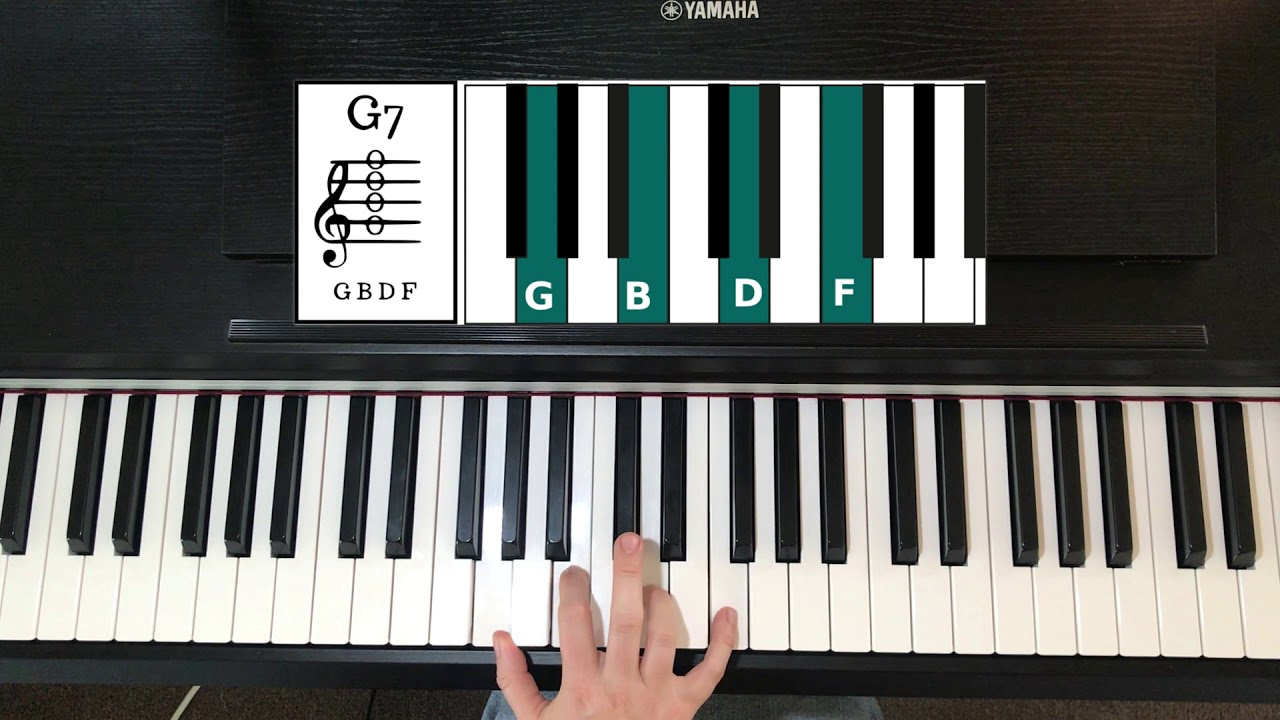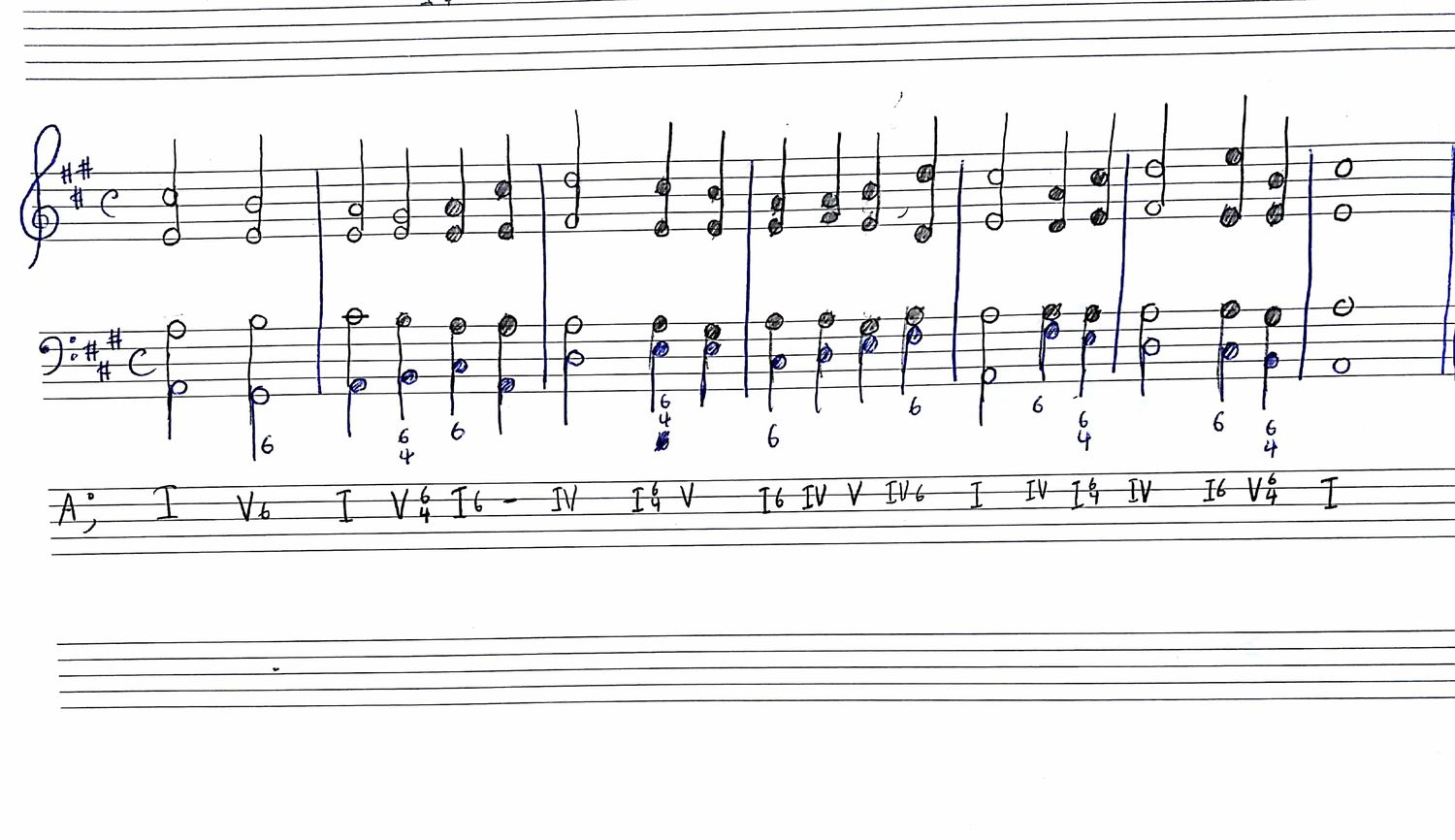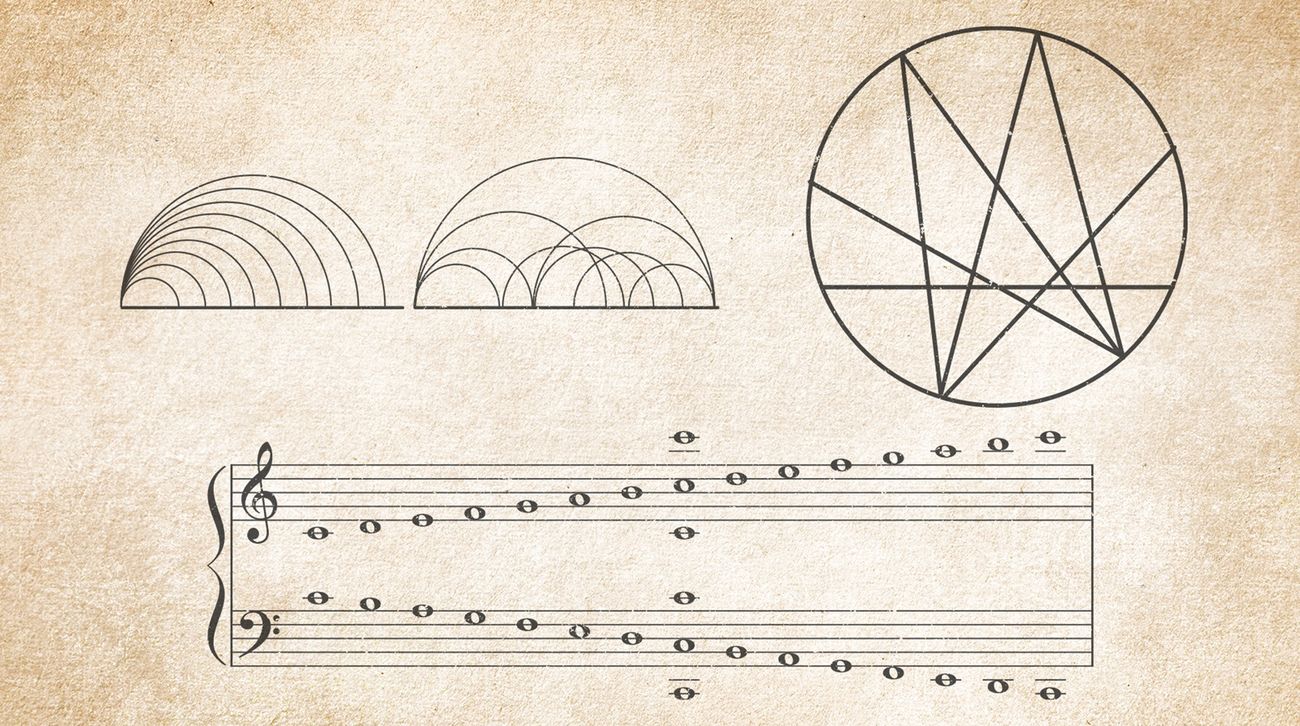Home>Production & Technology>Music Theory>Why Is It Called The IV Chord Music Theory


Music Theory
Why Is It Called The IV Chord Music Theory
Modified: January 31, 2024
Discover the answer to why the IV chord in music theory holds such significance. Explore the fundamentals of music theory and its impact on compositions.
(Many of the links in this article redirect to a specific reviewed product. Your purchase of these products through affiliate links helps to generate commission for AudioLover.com, at no extra cost. Learn more)
Table of Contents
Introduction
Music theory is the backbone of understanding and creating music. It provides a framework for musicians to analyze, interpret, and compose pieces. One essential aspect of music theory is chord progressions, which form the foundation of harmony and contribute to the overall texture and emotion of a musical piece.
One commonly used chord in music theory is the IV chord, also known as the subdominant chord. It plays a crucial role in creating tension, resolution, and adding depth to musical compositions. The IV chord is a staple in various genres, and its distinct sound has captivated listeners for centuries.
In this article, we will delve into the significance of the IV chord in music theory and explore its multifaceted nature. We will examine its historical origins, its role in generating harmonic progressions, the variations of IV chord progressions, and its prevalence in different musical genres. By the end, you will have a comprehensive understanding of why the IV chord is a fundamental component of music theory.
What is a IV chord?
A IV chord, also known as the subdominant chord, is a chord that is built on the fourth degree of a major or minor scale. In the key of C major, for example, the IV chord would consist of the notes F, A, and C. In the key of A minor, the IV chord would be D, F, and A.
The IV chord is unique in that it provides a sense of contrast and tension within a musical piece. It is often used to transition from the tonic chord (the I chord) to the dominant chord (the V chord), creating a satisfying release of tension. This harmonic movement is widely utilized in compositions of various genres and is a fundamental aspect of music theory.
The IV chord serves as a bridge between the stable, grounded feeling of the tonic and the dominant chord, which seeks resolution and closure. It adds richness and depth to a musical progression, allowing for a dynamic and engaging experience for the listener.
In addition to its role in chord progressions, the IV chord also contributes to the overall timbre and mood of a piece. Its sound is often described as warm, nostalgic, and comforting. It can evoke feelings of longing, introspection, or a sense of familiarity.
Understanding the IV chord is essential for musicians who wish to create harmonically rich and compelling compositions. By incorporating the IV chord into their musical vocabulary, composers and songwriters have a powerful tool at their disposal to captivate listeners and evoke specific emotions.
Historical significance of the IV chord
The IV chord has a rich historical significance in the world of music. Its use can be traced back to ancient Greek music, where it was employed to create a sense of tension and release. However, it wasn’t until the Renaissance period that the IV chord gained prominence in Western music.
During the Renaissance, composers began exploring and experimenting with new harmonic possibilities. The IV chord was instrumental in the development of polyphony, a style characterized by multiple independent lines of music that harmonically interact with one another. The IV chord provided a unique harmonic color and allowed composers to create rich and intricate textures.
In the Baroque era, composers like Johann Sebastian Bach utilized the IV chord to create powerful and dramatic harmonic progressions. It was a prevalent feature in his compositions, adding depth and complexity to his intricate counterpoint. The IV chord’s ability to create tension and release made it a crucial tool in conveying the emotions and narrative qualities of the music.
With the advent of the Classical era, composers such as Mozart and Haydn further expanded the possibilities of the IV chord. It became an essential component of symphonic music, where it was used to establish key relationships and modulations, adding variety and interest to their compositions.
As music evolved into the Romantic period, the IV chord took on new meaning and significance. Composers like Beethoven, Chopin, and Brahms used it to evoke a wide range of emotions, intensifying the dramatic impact of their works. The IV chord became an indispensable tool for expressing longing, tension, and resolution within their emotionally charged compositions.
Today, the IV chord continues to play a vital role in contemporary music. From pop and rock to jazz and blues, musicians utilize the IV chord to create memorable hooks, compelling chord progressions, and emotional impact. Its historical significance as a harmonic pillar has solidified its place as an essential element in the music of all genres and styles.
Role of the IV chord in music theory
The IV chord plays a significant role in music theory, contributing to the overall structure, harmony, and emotional impact of a musical composition. Understanding its role allows musicians to create thoughtful and compelling pieces that resonate with listeners.
One key aspect of the IV chord is its function within harmonic progressions. As the subdominant chord, it acts as a transitional chord, linking the stability of the tonic (I) chord to the tension of the dominant (V) chord. This progression, known as the tonic-subdominant-dominant (I-IV-V) progression, is one of the most common chord progressions in music. It creates a sense of tension and resolution, establishing a musical narrative that engages the listener.
The IV chord also serves as a point of departure for modulation, allowing composers to change keys within a piece. By using the IV chord in a different key, musicians can create harmonic transitions that provide variety and contrast. This technique adds complexity and interest to the composition, keeping the listener engaged and intrigued.
Harmonically, the IV chord introduces dissonance and tension within a musical piece. Its distinct sound creates a harmonic contrast that can generate a range of emotive experiences. Furthermore, the IV chord can be used to imply or suggest different modes or tonal centers, expanding the harmonic possibilities of a composition.
Beyond its harmonic function, the IV chord also contributes to the overall texture and arrangement of a piece. It can be used as a building block for melodic phrases or as a foundation for harmonic improvisation. By incorporating the IV chord in different ways, musicians can create unique and memorable musical moments.
In summary, the IV chord plays a vital role in music theory. Its function within harmonic progressions, ability to modulate, and contribution to overall texture and arrangement elevate the impact and complexity of musical compositions. Understanding the role of the IV chord allows musicians to harness its power and create harmonically rich, emotionally captivating pieces.
IV chord progressions
The IV chord is a versatile component in creating chord progressions, offering musicians a wide range of possibilities to explore. Its unique harmonic characteristics allow for interesting and dynamic musical expressions. Let’s explore some common IV chord progressions.
1. I-IV-V Progression: This progression is one of the most popular and widely used in music. Starting with the tonic (I) chord, it moves to the subdominant (IV) chord, and finally resolves to the dominant (V) chord. This progression provides a satisfying sense of tension and release, making it a staple in various genres such as pop, rock, and blues.
2. I-IV Progression: In this progression, the IV chord is used as a standalone chord without the final resolution to the dominant (V) chord. This creates a more open and unresolved feeling. It is often employed in folk and ballad-style music, adding a touch of melancholy or introspection.
3. IV-V-I Progression: This progression focuses on the IV and V chords, building tension before resolving back to the tonic (I) chord. It is commonly found in classical and jazz music, creating a sense of anticipation and drama. The IV chord provides a momentary departure from the stability of the tonic chord before the resolution occurs.
4. IV-IV-IV-IV Progression: This progression emphasizes the IV chord by repeating it multiple times. It creates a hypnotic and meditative effect, often associated with ambient or minimalist music. By emphasizing the IV chord, musicians can explore its harmonic and textural possibilities without the need for resolution.
5. IV-V/vi-IV Progression: This progression is commonly found in pop and rock music, adding a catchy and memorable quality to a song. The IV chord moves to a secondary dominant (V/vi), which then resolves to the relative minor (vi) chord. This progression creates a sense of anticipation and excitement before the resolution.
These examples represent just a fraction of the countless possibilities for IV chord progressions. Musicians have the freedom to experiment, combine, and modify these progressions to suit their creative vision. The versatility of the IV chord empowers musicians to create unique and captivating compositions that engage and resonate with listeners.
Common variations of the IV chord
The IV chord offers musicians a range of variations that add depth and complexity to their compositions. These variations can enhance the harmonic palette, create unique textures, and evoke specific emotions. Let’s explore some common variations of the IV chord.
1. IVmaj7: Adding the major 7th interval to the IV chord creates a lush and sophisticated sound. This variation is commonly used in jazz and contemporary genres, introducing a sense of tension and color to the chord. The IVmaj7 chord can provide a dreamy and ethereal quality to a composition.
2. IV7: The IV7 chord is a dominant variation of the IV chord. It brings a strong sense of tension and anticipation, often leading to the resolution of the dominant (V) chord. This variation is commonly used in blues and jazz music, adding a bluesy and gritty feel to the harmonic progression.
3. IVsus4: By substituting the major third of the IV chord with a perfect fourth, the IVsus4 chord creates a suspended and unresolved sound. This variation is commonly used in folk, rock, and pop genres, adding a sense of ambiguity and anticipation. The IVsus4 chord can create a longing or yearning effect in a composition.
4. IV6: The IV6 chord adds the sixth degree of the major scale to the IV chord, creating a brighter and more open sound. This variation is commonly used in classical and jazz music, providing a lush and sophisticated harmony. The IV6 chord can add a touch of elegance and sophistication to a composition.
5. IVadd9: Adding the ninth degree of the major scale to the IV chord creates a rich and harmonically complex sound. This variation is commonly used in various genres, including pop, rock, and jazz. The IVadd9 chord adds a layer of richness and depth to a composition, providing an interesting harmonic color.
These variations are just a few examples of the possibilities when it comes to the IV chord. Musicians can experiment with different chord voicings, inversions, and extensions to create their unique sound. By incorporating these variations, musicians can elevate their compositions and add a distinct flavor to their harmonic progressions.
IV chord in different musical genres
The IV chord is a versatile harmonic element that is found in various musical genres. Its distinctive sound and harmonic function contribute to the unique characteristics of each genre. Let’s explore how the IV chord is utilized in different musical genres.
1. Pop and Rock: In pop and rock music, the IV chord is often used to create catchy and memorable hooks. It adds a sense of anticipation and energy to the progression, enhancing the overall impact of the song. The IV chord is frequently found in chord progressions that follow the I-IV-V pattern, creating a strong sense of resolution and familiarity.
2. Blues: The IV chord plays a fundamental role in blues music. It forms the backbone of the 12-bar blues progression, where the IV chord provides a momentary departure from the tonic and adds a bluesy flavor to the progression. The IV chord in blues music is often played as a dominant seventh chord, amplifying the tension and creating a satisfying resolution back to the tonic.
3. Jazz: In jazz, the IV chord is often used in complex harmonic progressions and improvisations. It is an essential element in the jazz standard repertoire, providing harmonic color and opportunities for musicians to showcase their improvisational skills. Jazz musicians commonly incorporate various IV chord variations, such as IVmaj7, IV7, and IV6, to add sophistication and interest to their compositions.
4. Classical: The IV chord in classical music is used to establish key relationships and modulations. Composers utilize the IV chord to create harmonic transitions and introduce new tonal centers within a piece. It adds a sense of tension and variety, contributing to the overall structure and emotional impact of classical compositions.
5. Folk and Country: The IV chord is prevalent in folk and country music, often used to create a sense of nostalgia and storytelling. It adds a warm and inviting quality to the progression, enhancing the emotional connection between the lyrics and the listener. The IV chord is frequently played as a major or major seventh chord, contributing to the distinct sound of these genres.
6. R&B and Soul: In R&B and soul music, the IV chord is used to create soulful and emotive progressions. It adds depth and richness to the harmonic texture, emphasizing the emotional impact of the lyrics. The IV chord variations, such as IVmaj7 and IV7, are commonly utilized to enhance the soulful qualities of these genres.
These examples represent just a snapshot of how the IV chord is utilized in different musical genres. Its versatile nature allows musicians from various genres to incorporate it into their compositions, creating harmonic progressions that are unique and distinctive to their style.
Conclusion
The IV chord, also known as the subdominant chord, holds significant importance in music theory and composition. Its unique harmonic qualities and versatile nature have made it a staple in countless musical genres throughout history.
From its historical origins in ancient Greek music to its prominent role in Renaissance polyphony, Baroque compositions, and beyond, the IV chord has evolved and adapted to the changing musical landscape. It has become a crucial tool for composers and musicians to convey emotion, create tension and resolution, and add complexity to their compositions.
The IV chord’s function within harmonic progressions, its ability to modulate and establish new tonal centers, and the numerous variations it offers have made it an essential element of music theory. Musicians can explore a wide range of possibilities, from major and minor variations to extensions and suspensions, creating harmonic progressions that are both unique and engaging.
Whether it is used to create catchy pop hooks, add a soulful touch to R&B and soul music, or provide a foundation for improvisation and complex jazz progressions, the IV chord remains a versatile and essential component of music across genres.
Understanding the role and significance of the IV chord empowers musicians to unlock its potential and create harmonically rich and emotionally compelling compositions. By harnessing its tension and resolution, composers can guide listeners on a musical journey filled with anticipation, release, and connection.
In conclusion, the IV chord stands as a testament to the power and beauty of music theory. Its ability to shape and influence the harmonic landscape has made it an enduring and indispensable element of music composition. By embracing the IV chord in our musical endeavors, we can tap into its timeless allure and continue to create captivating and evocative music for generations to come.











